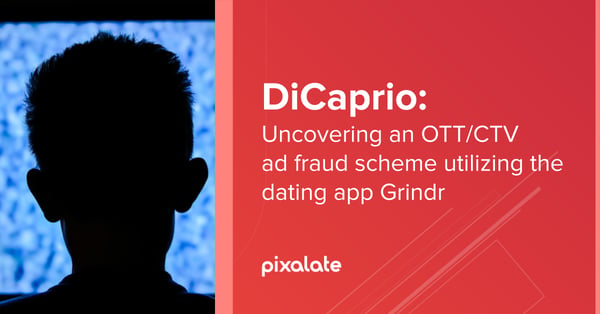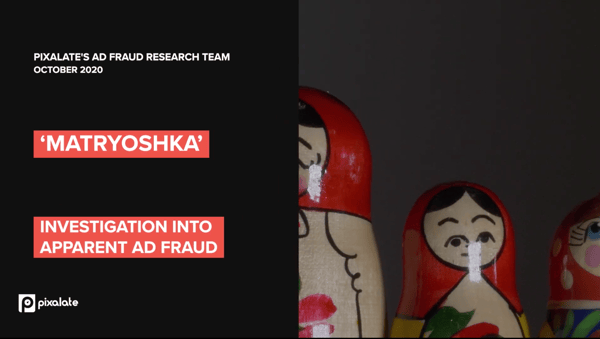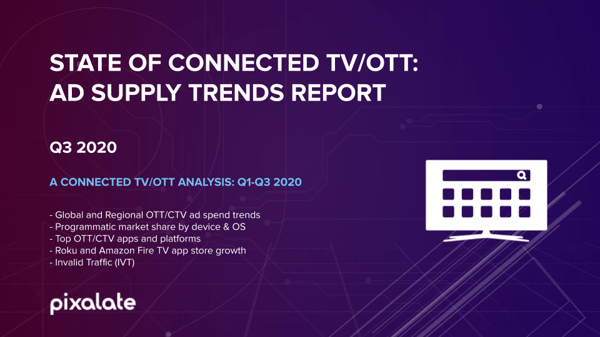
Here are Pixalate's top 5 stories from 2020.

In early 2020, Pixalate published its findings on the "DiCaprio" ad fraud scheme, the first large-scale attack on programmatic Connected TV/OTT advertising uncovered. The scheme highlighted how scammers abuse mobile app advertising security loopholes to carry out ad fraud attacks on programmatic OTT/CTV advertising. BuzzFeed News has more.

Pixalate uncovered another Connected TV/OTT ad fraud scheme in "Monarch" — which was unique in the fact that it originated in, and was self-contained in, the OTT/CTV ecosystem (that is, no other devices, such as smartphones or computers, were used to carry out the ad fraud). In this ad fraud attack, Roku apps designed for passive viewing appear to have been targeted in an programmatic OTT/CTV ad fraud attack that cost advertisers over seven figures. Adweek has more on "Monarch."

Pixalate detailed its investigation into the "Matryoshka" ad fraud scheme, which resulted in well in excess of $10 million of ad spend lost while impacting least two million iOS and Android users. Of note, the "Matryoshka" ad fraud scheme made unauthorized use of – and misappropriated – consumers’ personal information, including latitude and longitude coordinates, device ID, and IP address. Forbes has more.

Pixalate this year introduced the first-ever Connected TV/OTT Seller Trust Index (CSTI) as an addition to Pixalate’s suite of programmatic seller quality rankings. The CSTI ranks the overall quality of programmatic sellers across three major OTT/CTV platforms: Roku, Amazon, and Samsung.

Pixalate released multiple programmatic ad supply update reports this year to keep the advertising industry updated on the latest trends during the COVID-19 pandemic, including updates during the early stages of the pandemic as well as a 2020 summary (as of the end of Q3) on programmatic OTT/CTV ad activity. Our analysis revealed that programmatic OTT/CTV advertising was relatively fast to recover this spring, and that there was a 70% increase in programmatic OTT/CTV ad sales between Q120 and Q320.
*By entering your email address and clicking Subscribe, you are agreeing to our Terms of Use and Privacy Policy.
These Stories on Company News
*By entering your email address and clicking Subscribe, you are agreeing to our Terms of Use and Privacy Policy.

Disclaimer: The content of this page reflects Pixalate’s opinions with respect to the factors that Pixalate believes can be useful to the digital media industry. Any proprietary data shared is grounded in Pixalate’s proprietary technology and analytics, which Pixalate is continuously evaluating and updating. Any references to outside sources should not be construed as endorsements. Pixalate’s opinions are just that - opinion, not facts or guarantees.
Per the MRC, “'Fraud' is not intended to represent fraud as defined in various laws, statutes and ordinances or as conventionally used in U.S. Court or other legal proceedings, but rather a custom definition strictly for advertising measurement purposes. Also per the MRC, “‘Invalid Traffic’ is defined generally as traffic that does not meet certain ad serving quality or completeness criteria, or otherwise does not represent legitimate ad traffic that should be included in measurement counts. Among the reasons why ad traffic may be deemed invalid is it is a result of non-human traffic (spiders, bots, etc.), or activity designed to produce fraudulent traffic.”

